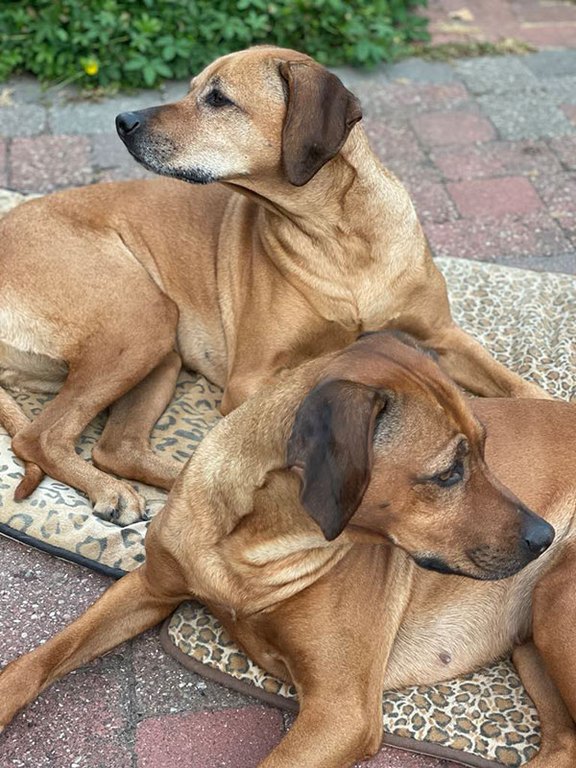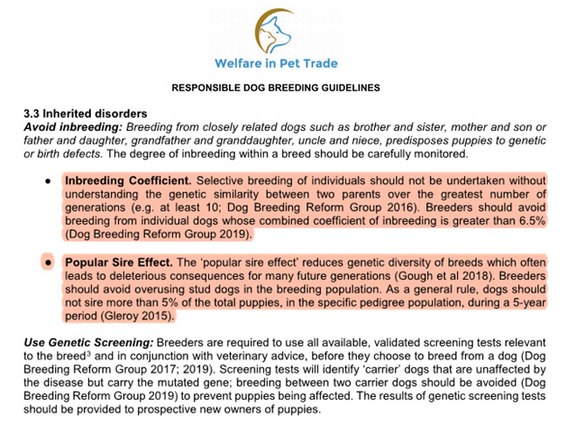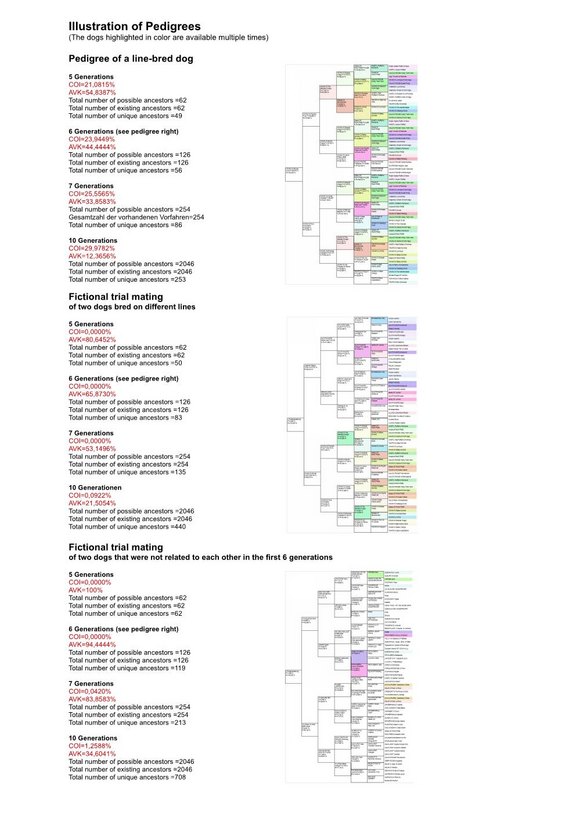Genetic diversity

One of the most important factors for long-term sustainable breeding is the maintenance of a healthy breeding structure in which as much genetic diversity as possible is maintained within the population. Genetic diversity is crucial for the population's adaptability and ability to survive. A decline in genetic diversity increases the risk of hereditary diseases, immunodeficiency and infertility. When there is a lack of genetic diversity in a population, it is extremely difficult to deal with health problems and other undesirable traits within the breed, as it is simply not possible to make appropriate breeding selections if all individuals carry the same genetic variant for a particular trait.

It is therefore important that breeders pay more attention to the ancestors of their dogs and to the coefficient of inbreeding (COI) and the ancestral loss coefficient (AVK).
The various databases available online provide the values. The ancestor loss coefficient (AVK) is also shown in these databases, but you could easily calculate it yourself:
A pedigree on 5 generations contains a total of 62 ancestors. If they are all different dogs, then there is no ancestor loss. However, if one of the dogs is represented twice, the dog only has 61 different ancestors. This results in the so-called ancestor loss, which in this case is 1.61%. The AVK, which is shown in the pedigree databases, is the opposite value and shows what percentage of the ancestors are different - in this case it is 98.39%.
The calculation of the coefficient of inbreeding (COI) is far more complicated.
The coefficient of inbreeding (COI) is currently the most well-known way of expressing genetic diversity. It calculates the probability that the offspring of closely related parents will contain the same genetic information as the last common ancestor of the two parents. In genetic terms, the inbreeding coefficient makes a mathematical prediction about the extent to which an offspring at any location on a chromosome (locus) has inherited two identical alleles of a gene from both ancestors (homozygosity).
There are several ways to calculate the COI, but most are only approximate formulas. An exact but also very complex method is the Wright calculation. The American geneticist Sewall Wright developed this formula in the 1920s.
The resulting value is a number that expresses the genetic relationship between the two breeding partners. The smaller the percentage, the more genetically different the two breeding animals are.
Since an increased inbreeding coefficient leads to a higher degree of pure inheritance in the offspring and most hereditary diseases are inherited recessively, hereditary diseases can occur more frequently in limited populations (as is the case in pure breeding of dogs).
The various pedigree programs now available on the market calculate the COI in seconds at the touch of a button. Of course, to obtain a meaningful value, the pedigree must be complete for the generations used for the calculation. Missing ancestors will distort the value.

Extract of the breeding recommendations published on the EU Platform for Animal Welfare
Conclusion: The recommendation is a maximum COI of 6.5% over 10 generations. To achieve this, close mating of closely related animals should no longer be carried out!

